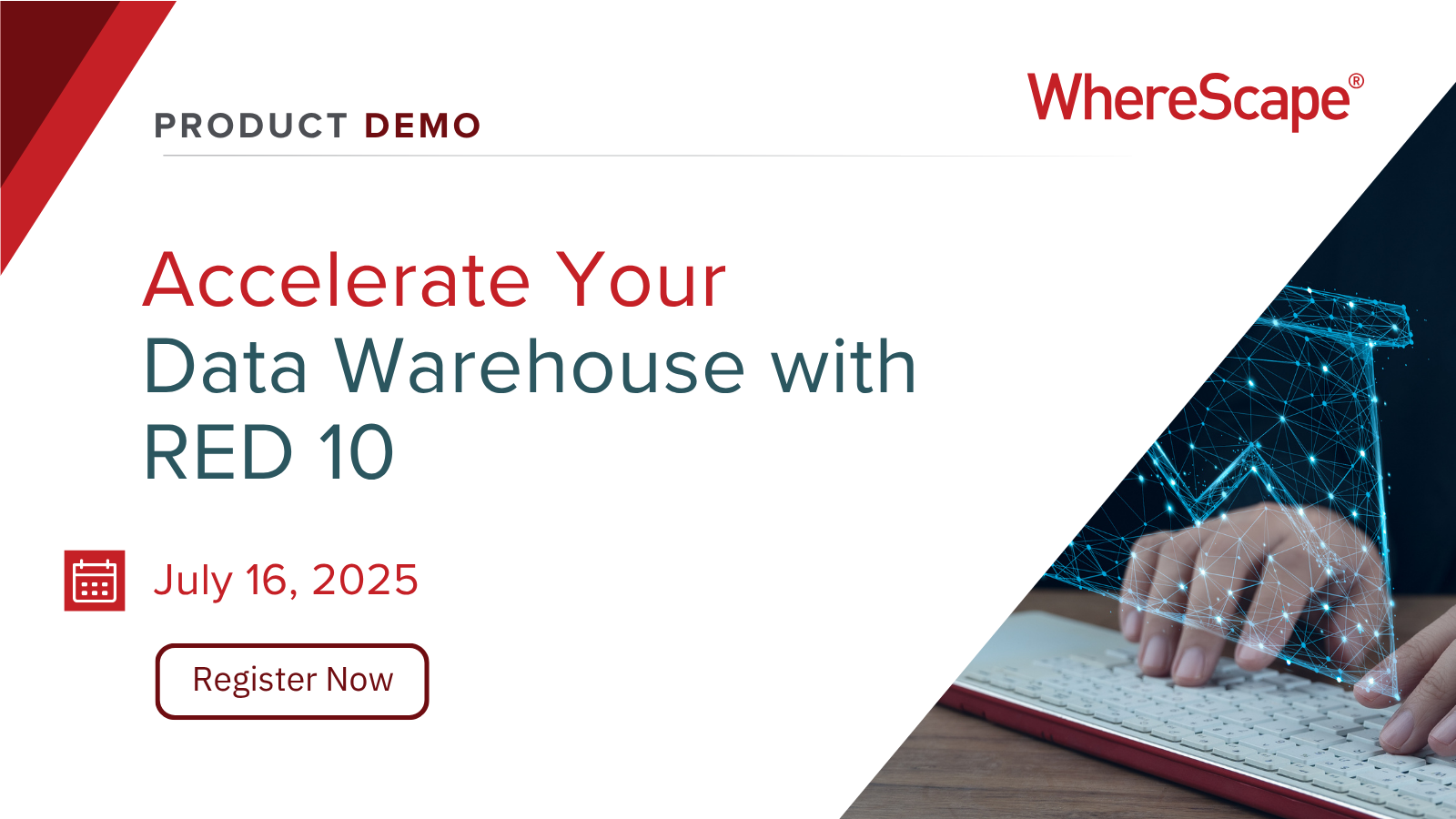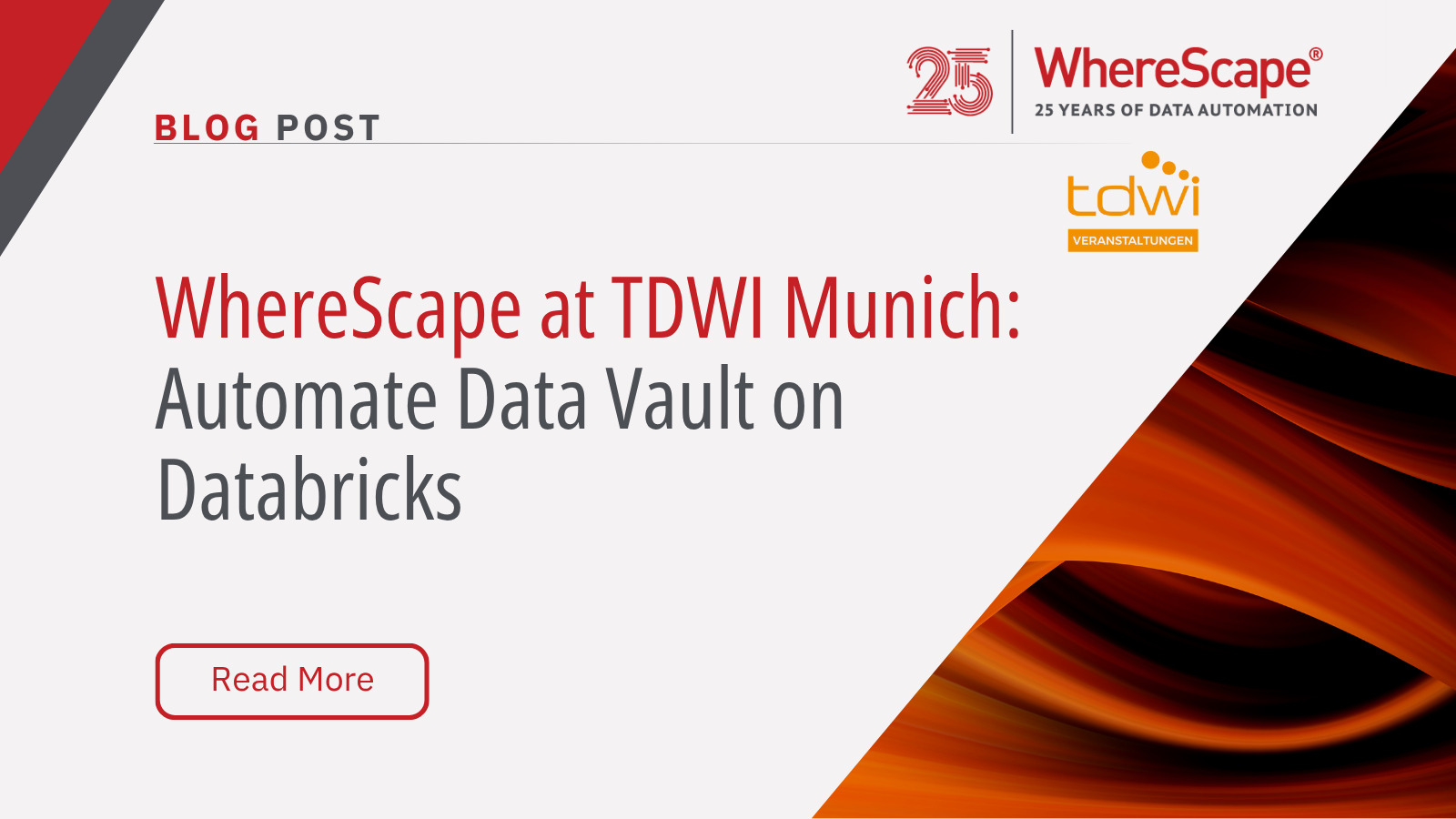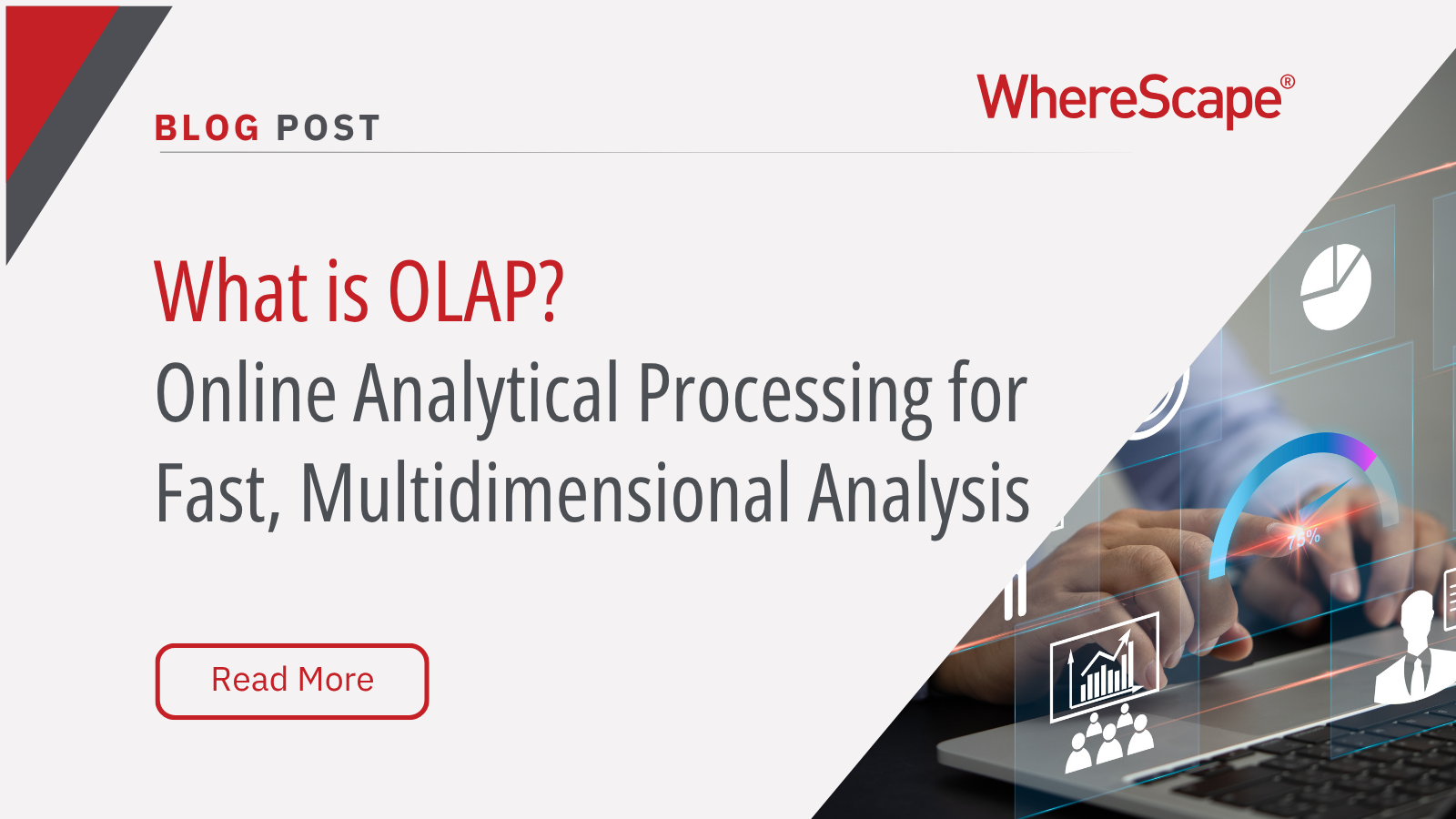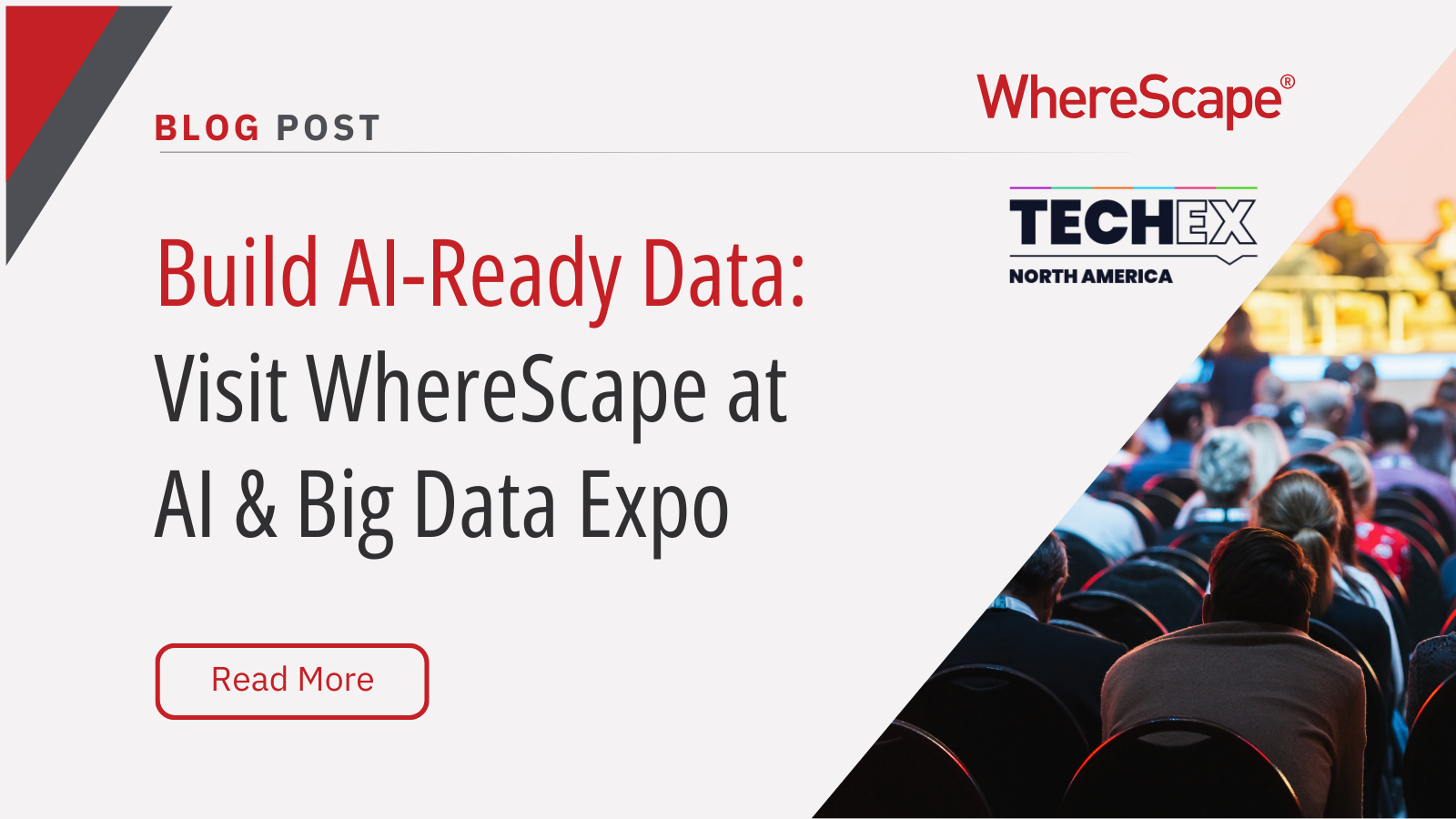Tune in for a free, live virtual hands-on lab...
Revisiting Gartner’s First Look at Data Warehouse Automation
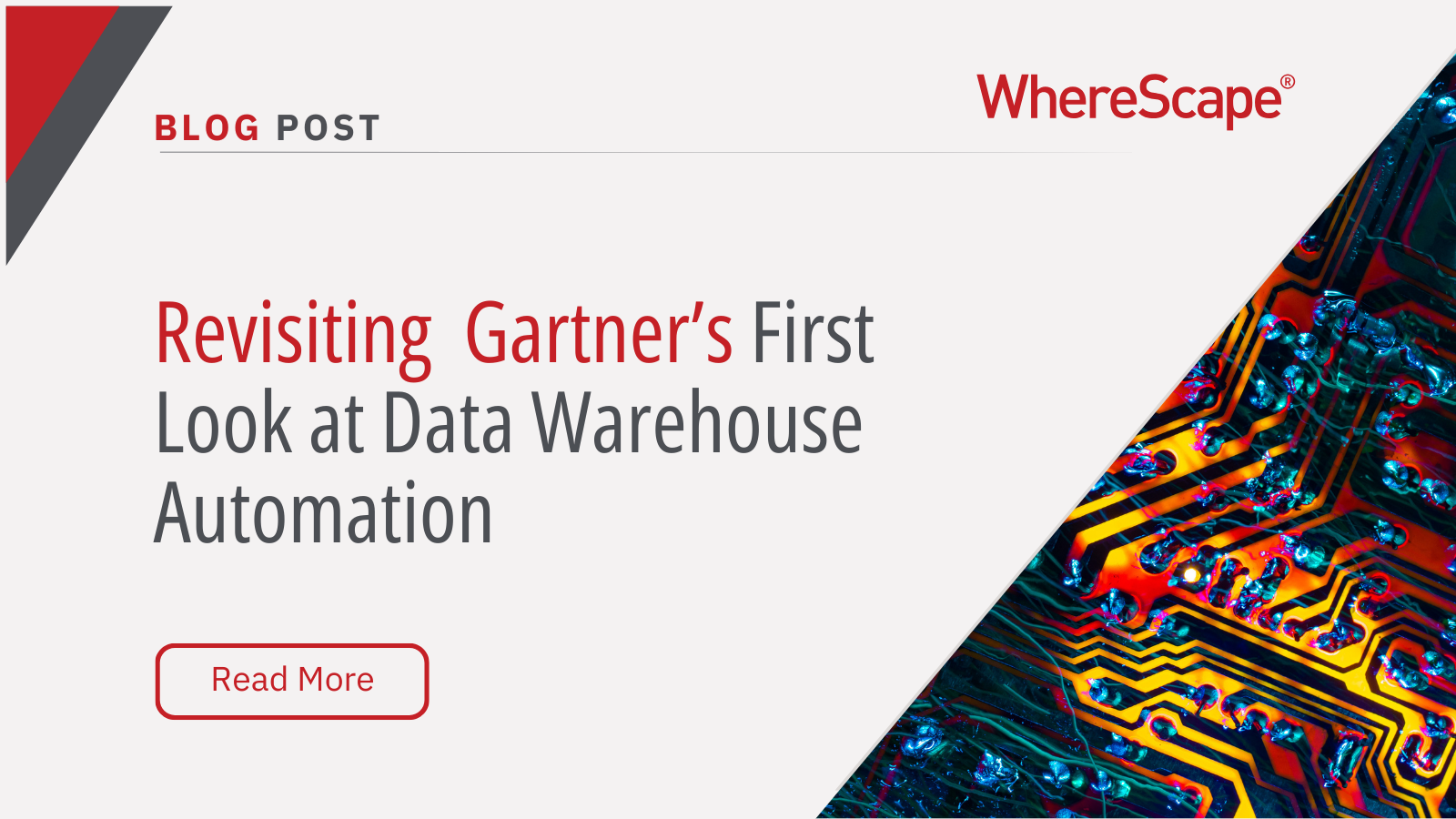
At WhereScape, we are delighted to revisit Gartner’s influential technical paper, Assessing the Capabilities of Data Warehouse Automation (DWA), published on February 8, 2021, by analyst Ramke Ramakrishnan. This paper marked a significant milestone for the data industry by highlighting the rising importance of automation in managing modern data ecosystems.
In the three years since its release, the conversation around Data Warehouse Automation has only grown louder. Automation is no longer a luxury; it’s a necessity for businesses striving to keep pace with the complexity of today’s data-driven environments. This update will not only recap the key takeaways from Gartner’s groundbreaking research but also incorporate new trends, technologies, and perspectives that have emerged in the field of DWA.
Why Data Warehouse Automation Is More Relevant Than Ever
The rapid evolution of the data landscape has brought new challenges for businesses: hybrid and multi-cloud deployments, real-time analytics, unstructured data integration, and increasingly stringent governance requirements. These challenges have amplified the demand for robust automation solutions that simplify and scale operations.
Gartner’s paper laid the groundwork for understanding how automation can revolutionize the data warehouse lifecycle. In 2024, these insights remain a cornerstone for organizations looking to modernize their data strategies.
Let’s explore how the themes from Gartner’s original report align with the needs of modern enterprises and how recent innovations have pushed these ideas even further.
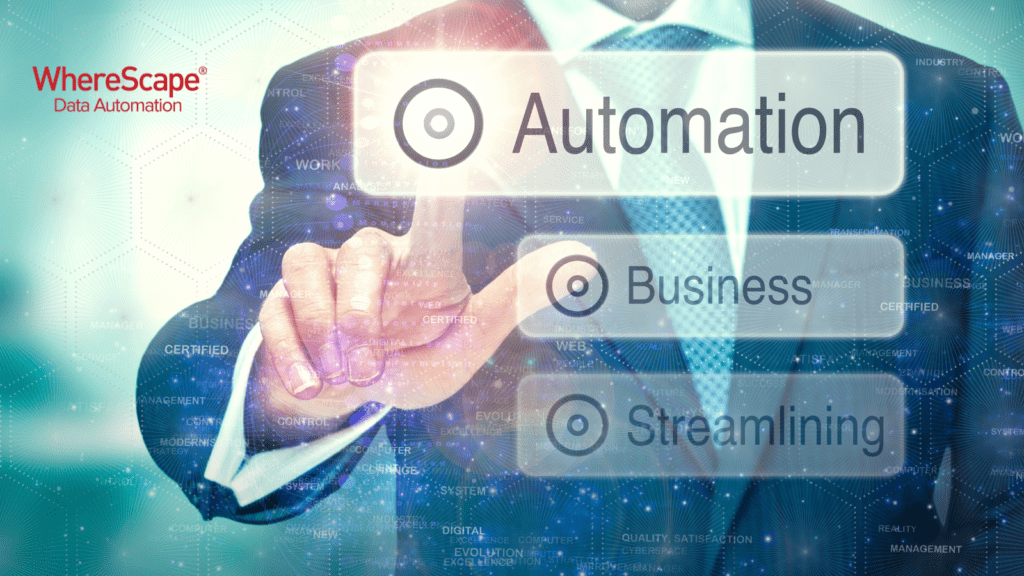
1. Automating the Data Warehouse Lifecycle with Metadata and Templates
One of Gartner’s pivotal observations was the transformative role of metadata-driven automation. Tools like WhereScape orchestrate the entire data warehousing process, eliminating manual modeling, coding, and interdepartmental handoffs that can lead to delays or errors. By using industry-proven templates and robust metadata frameworks, these tools streamline development and automate manual tasks, ensuring consistency across projects.
What’s New?
Since 2021, metadata-driven tools have expanded their capabilities to support:
- Cloud-Native Integration: Modern tools offer seamless compatibility with cloud platforms like AWS Redshift, Google BigQuery, and Snowflake, ensuring flexibility and scalability for cloud-first businesses.
- AI-Assisted Workflows: Machine learning now enhances template design, recommending optimal configurations based on historical performance and project requirements.
- Multi-Tenant Support: Automation tools have been updated to cater to multi-tenant environments, enabling businesses to manage separate data environments with ease.
Key Quote from Gartner Analyst Ramke Ramakrishnan:
“The metadata-driven approach provides a repository that contains all the artifacts for automating the data warehouse platform. This ensures consistency, standardization, and continuous improvement, especially as businesses evolve.”
2. Addressing Growing Data Complexity Through Automation
As businesses adopt advanced analytics and integrate diverse data sources, managing complexity has become a top priority. Gartner highlighted the necessity of automation in environments where traditional methods struggle to keep up with real-time data processing, IoT integrations, and complex hybrid cloud ecosystems.
Recent Trends That Amplify This Need:
- Data Mesh and Data Fabric Architectures: These modern approaches to data management require sophisticated automation tools to ensure consistent integration and governance.
- Streaming Data at Scale: The ability to process and analyze data in motion, rather than at rest, has transformed industries like finance, healthcare, and retail.
Key Gartner Insight:
“Automation is essential for handling real-time data, low-latency performance, and complex integration of structured and unstructured data, especially in environments with sensor data and IoT.”
3. Supporting Agile Methodologies with DWA
The original Gartner report underscored how automation facilitates Agile practices like DevOps and DataOps by removing bottlenecks in data preparation and enabling faster iterations. This allows data teams to respond quickly to changing business needs.
What’s Evolved?
- Advanced DataOps Capabilities: Today’s tools incorporate real-time monitoring and automatic pipeline validation, ensuring that workflows remain reliable even under dynamic conditions.
- CI/CD for Data Pipelines: Automation tools now seamlessly align with continuous integration and deployment systems, enabling effortless updates and minimizing downtime.
Key Gartner Insight:
“DataOps in the data warehouse systems brings rigor, agility, reuse, and automation to the development of data pipelines and analytical applications.”
4. Enhancing Prototyping and Design Approaches
Rapid prototyping has always been a hallmark of WhereScape’s automation capabilities. Gartner’s paper emphasized how tools that enable quick iteration of data models foster greater collaboration between IT teams and business stakeholders.
New Features to Watch:
- AI-Powered Prototyping: Artificial intelligence now assists in identifying potential design flaws and suggesting improvements during the prototyping phase.
- Interactive Dashboards: Advanced visualization tools allow stakeholders to interact directly with prototypes, providing immediate feedback and accelerating development cycles.
Key Gartner Insight:
“Using an iterative approach, data warehouse developers can rapidly build several prototypes before implementing the solution that meets the business user’s requirements.”
5. Automation’s Role in Data Vault Modeling
Data Vault modeling has grown in popularity due to its flexibility in adapting to changing business needs. However, without automation, its complexity can become overwhelming. Gartner rightly highlighted how DWA simplifies Data Vault design and scaling.
What’s New?
- Simplified Onboarding: Pre-configured templates for Data Vault implementation have reduced the learning curve for new adopters.
- Advanced Maintenance Tools: Automation now includes features for automatically validating and updating Data Vault structures as new data sources are added.
Key Gartner Insight:
“DWA tools are a great way to manage the complexity of Data Vault models, enabling efficient design, scalability, and maintenance.”
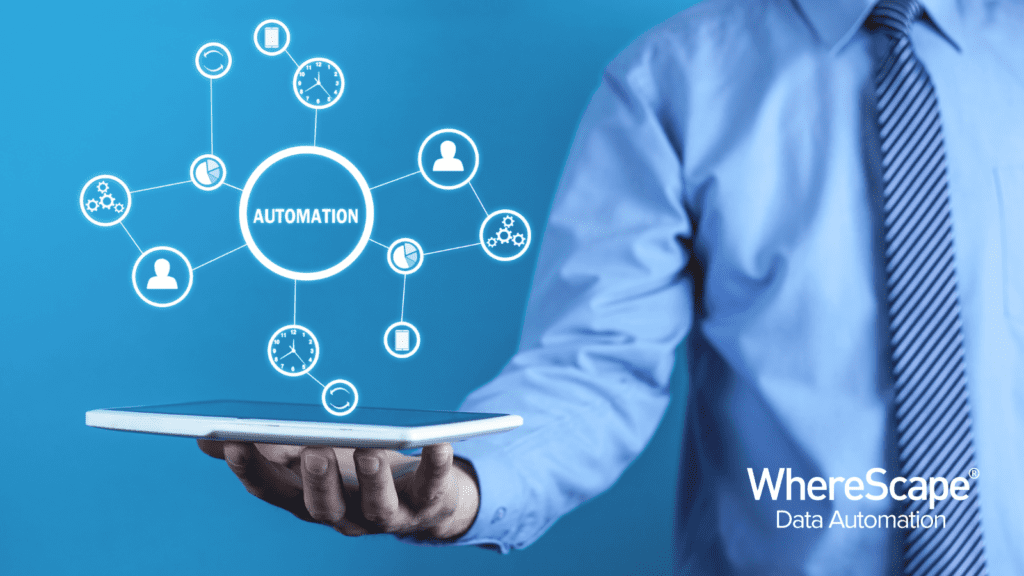
Emerging Trends in Data Warehouse Automation
Looking forward, several key trends are poised to shape the future of Data Warehouse Automation:
- AI-Driven Data Optimization: Predictive analytics and machine learning are increasingly integrated into automation tools to anticipate and resolve data bottlenecks.
- Self-Service Analytics: Empowering business users to explore data without relying on IT teams will become more prevalent, supported by intuitive automation interfaces.
- Hybrid and Multi-Cloud Integration: Automation will play a critical role in unifying on-premise and cloud-based data ecosystems.
- Stronger Data Governance and Compliance: With growing regulatory scrutiny, automation tools are enhancing features for traceability and adherence to global standards like GDPR and CCPA.
Embracing the Future of Data Warehouse Automation
Gartner’s technical paper on Data Warehouse Automation provided a crucial framework for understanding how automation revolutionizes data management. As tools evolve to meet the challenges of a modern data landscape, the core principles outlined in the report remain essential.
At WhereScape, we continue to innovate, helping businesses simplify data warehouse development and achieve faster time-to-value. Whether you’re adopting Data Vault modeling, building prototypes, or integrating Agile methodologies, automation is your key to success.
Ready to take the next step? Talk to one of our experts today and discover how WhereScape can help your business leverage the power of Data Warehouse Automation.
Gartner members can read the full paper here: Assessing the Capabilities of Data Warehouse Automation.
Updated by Kortney Phillips | November 2024
WhereScape at TDWI Munich: Automate Data Vault on Databricks
WhereScape at TDWI Munich 2025: Automate a Full Data Vault on Databricks in Just 45 Minutes June 24–26, 2025 | MOC Munich, Germany As data complexity grows and business demands accelerate, scalable and governed data architectures are no longer optional—they're...
What Is OLAP? Online Analytical Processing for Fast, Multidimensional Analysis
Streamline your data analysis process with OLAP for better business intelligence. Explore the advantages of Online Analytical Processing (OLAP) now! Do you find it challenging to analyze large volumes of data swiftly? A Forrester study reveals that data teams spend...
Build AI-Ready Data: Visit WhereScape at AI & Big Data Expo
June 4–5, 2025 | Booth 202 | Santa Clara Convention Center As organizations scale their artificial intelligence and analytics capabilities, the demand for timely, accurate, governed, and AI-ready data has become a strategic priority. According to Gartner, through...
Automating Star Schemas in Microsoft Fabric: A Webinar Recap
From Data Discovery to Deployment—All in One Workflow According to Gartner, data professionals dedicate more than half of their time, 56%, to operational tasks, leaving only 22% for strategic work that drives innovation. This imbalance is especially apparent when...
What is a Data Model? How Structured Data Drives AI Success
What is a data model? According to the 2020 State of Data Science report by Anaconda, data scientists spend about 45% of their time on data preparation tasks, including cleaning and loading data. Without well-structured data, even the most advanced AI systems can...
ETL vs ELT: What are the Differences?
In working with hundreds of data teams through WhereScape’s automation platform, we’ve seen this debate evolve as businesses modernize their infrastructure. Each method, ETL vs ELT, offers a unique pathway for transferring raw data into a warehouse, where it can be...
Dimensional Modeling for Machine Learning
Kimball’s dimensional modeling continues to play a critical role in machine learning and data science outcomes, as outlined in the Kimball Group’s 10 Essential Rules of Dimensional Modeling, a framework still widely applied in modern data workflows. In a recent...
Automating Data Vault in Databricks | WhereScape Recap
Automating Data Vault in Databricks can reduce time-to-value by up to 70%—and that’s why we hosted a recent WhereScape webinar to show exactly how. At WhereScape, modern data teams shouldn't have to choose between agility and governance. That's why we hosted a live...
WhereScape Recap: Highlights From Big Data & AI World London 2025
Big Data & AI World London 2025 brought together thousands of data and AI professionals at ExCeL London—and WhereScape was right in the middle of the action. With automation taking center stage across the industry, it was no surprise that our booth and sessions...
Why WhereScape is the Leading Solution for Healthcare Data Automation
Optimizing Healthcare Data Management with Automation Healthcare organizations manage vast amounts of medical data across EHR systems, billing platforms, clinical research, and operational analytics. However, healthcare data integration remains a challenge due to...
Related Content
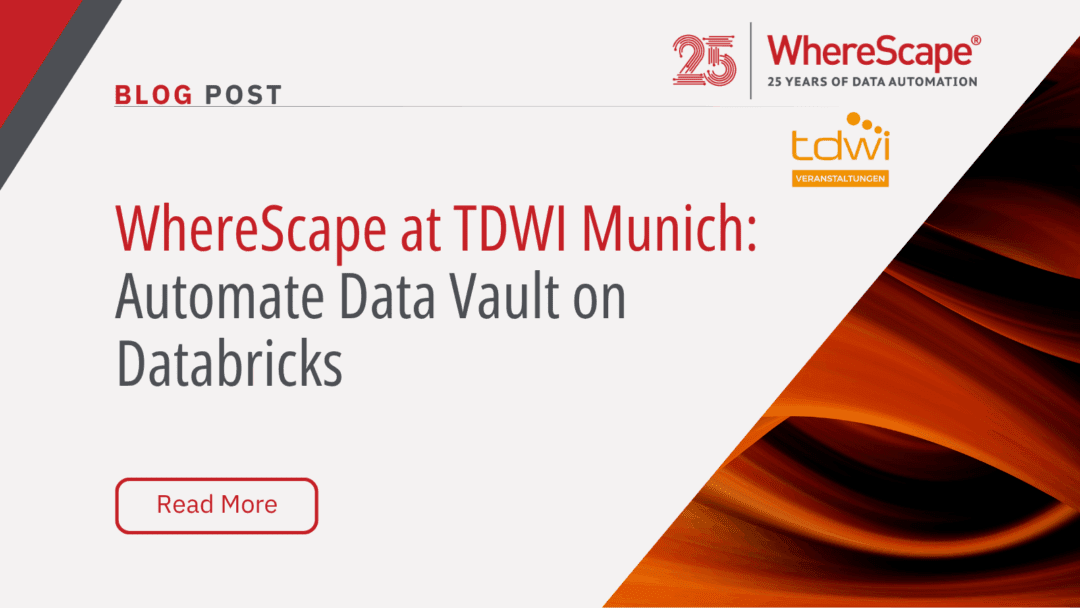
WhereScape at TDWI Munich: Automate Data Vault on Databricks
WhereScape at TDWI Munich 2025: Automate a Full Data Vault on Databricks in Just 45 Minutes June 24–26, 2025 | MOC Munich, Germany As data complexity grows and business demands accelerate, scalable and governed data architectures are no longer optional—they're...
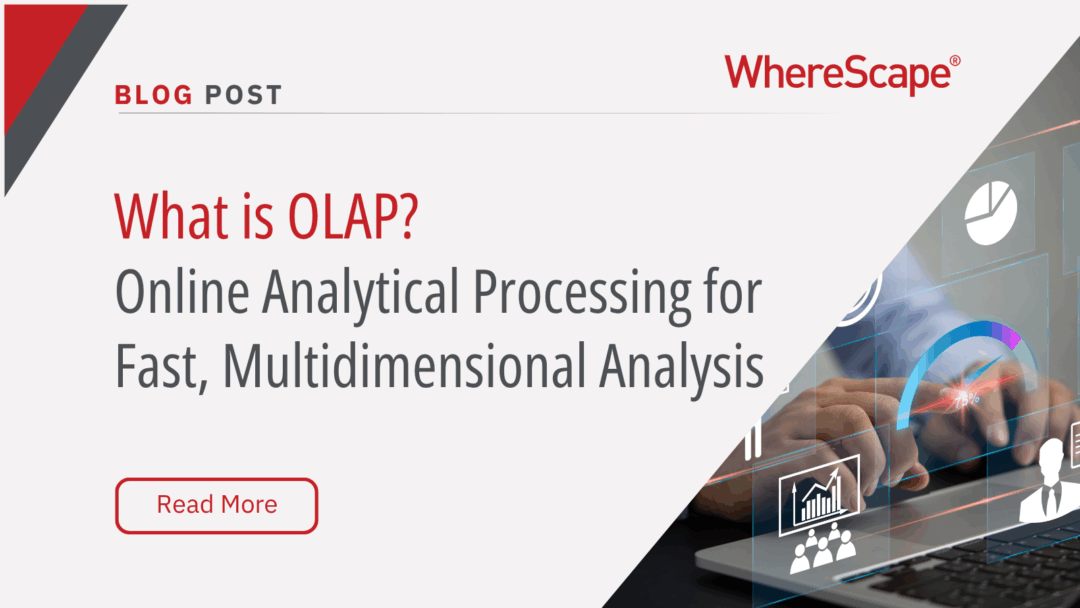
What Is OLAP? Online Analytical Processing for Fast, Multidimensional Analysis
Streamline your data analysis process with OLAP for better business intelligence. Explore the advantages of Online Analytical Processing (OLAP) now! Do you find it challenging to analyze large volumes of data swiftly? A Forrester study reveals that data teams spend...
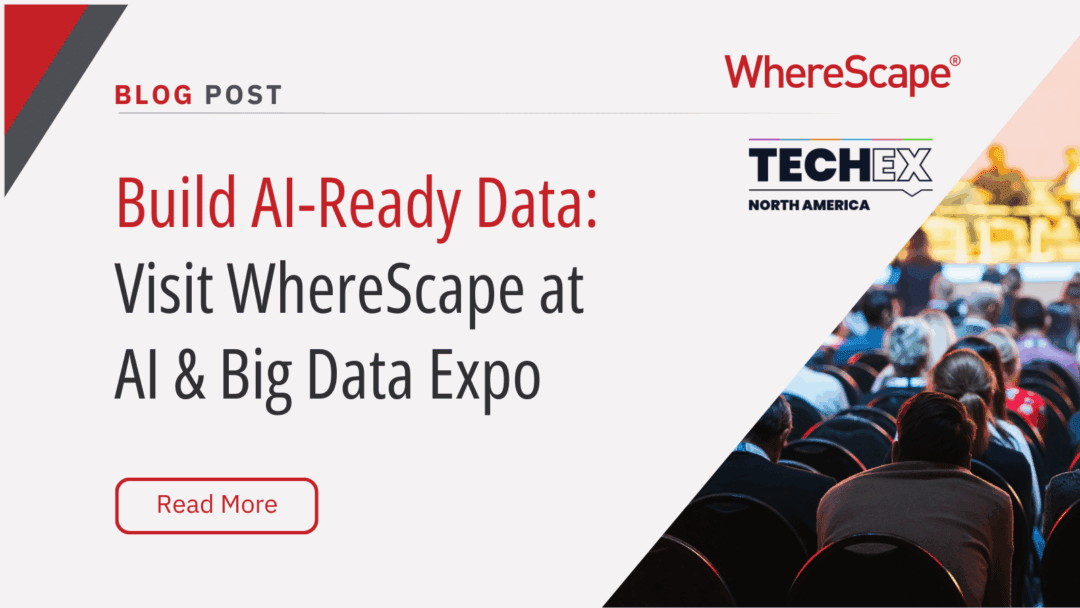
Build AI-Ready Data: Visit WhereScape at AI & Big Data Expo
June 4–5, 2025 | Booth 202 | Santa Clara Convention Center As organizations scale their artificial intelligence and analytics capabilities, the demand for timely, accurate, governed, and AI-ready data has become a strategic priority. According to Gartner, through...
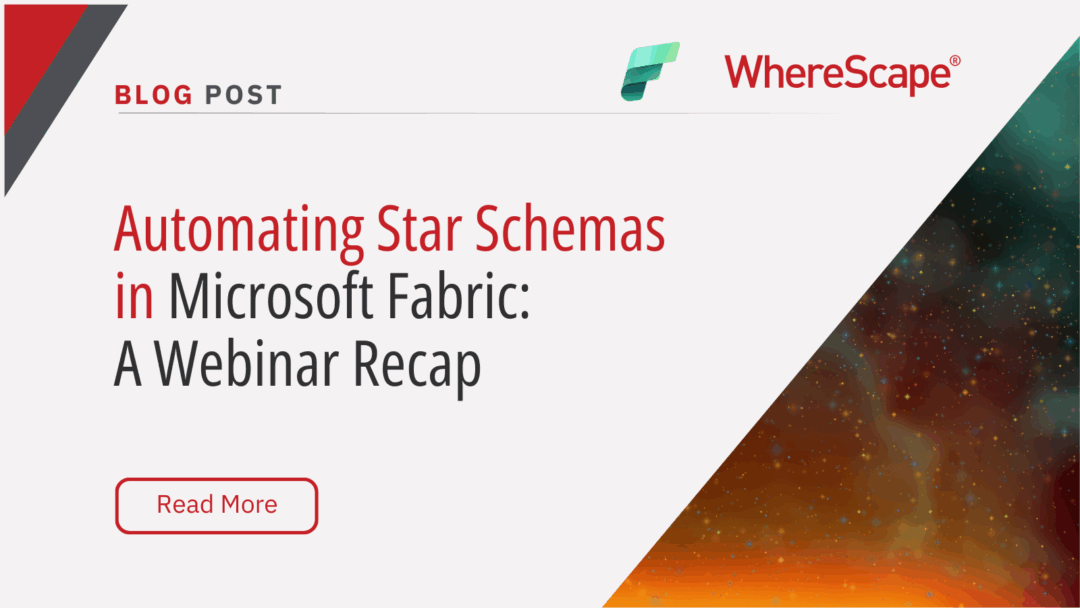
Automating Star Schemas in Microsoft Fabric: A Webinar Recap
From Data Discovery to Deployment—All in One Workflow According to Gartner, data professionals dedicate more than half of their time, 56%, to operational tasks, leaving only 22% for strategic work that drives innovation. This imbalance is especially apparent when...

